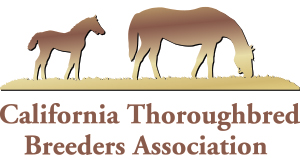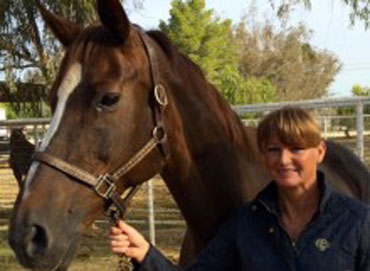By Paulickreport.com
A few days after Wild in the Saddle’s win in the Dream of Summer Stakes at Santa Anita, Nadine Anderson was running on a few hours’ sleep, but her voice hadn’t lost the glow of an owner’s first stakes win.
Anderson is a co-owner and manager at Brazeau Thoroughbred Farm in Hemet, Calif., where she does everything from overseeing the grounds crew to helping break young horses to foaling out mares—the latter responsibility being the one that’s keeping her up all hours these days. Anderson is a life-long horsewoman who grew up showing horses and began galloping as a teenager to make extra cash.
“Once you’ve gotten into it, it’s going to stick with you for life,” she said.
Anderson moved on to racing Arabians, where she was enormously successful. She worked for Sheikh Mohammed, took horses to each of the major Arabian stakes races in America, and was the breeder of Pacifica, one of the first Arabians exported from the States to the UAE.
“They had an article printed in the newspaper in England that said of all his hundreds of horses, his Arabian mare Pacifica was his favorite,” she said. “It had a little picture of him feeding her carrots. It was like, ‘Wow, I can’t believe it.’”
Anderson eventually got out of Arabians and began managing Getaway Farm in Romoland, Calif. She purchased broodmares on behalf of the farm, including the long-legged Wild Deputy mare Local Law. She crossed Local Law with the Sadler’s Wells son Silic (FR), who stood at the farm. The owner of the facility went bankrupt and sold the property, leaving Anderson behind with the horses. One day, she got a package in the mail with the Jockey Club registration papers for over 100 animals.
“I pretty much sold everything I owned and fed them. In doing that, I had to sell them to buy hay,” Anderson recalled.
One of the horses she was most reluctant to sell was the 2009 daughter of Silic and Local Law, Wild in the Saddle. Eventually, Anderson let her go to owner/trainer Robert Lucas with the condition that she had first right of refusal to purchase the horse if Wild in the Saddle retired.
The filly cracked her cannon bone winning a 4.5 furlong claimer in 2012, and Anderson got a call.
“I didn’t have the money, but I scraped it up,” said Anderson, who co-owns the horse with her farrier, Cheyennea Ortiz. She assumed the injury would signal the start of the horse’s breeding career, but Wild in the Saddle had “no interest whatsoever in coming in season.”
Over time, Wild in the Saddle began putting on weight, and her x-rays showed improvement, so she went back into training and began moving up the ranks to allowance contests. A relapse of the old injury late in 2013 sent her to the farm for eight months’ lay-up and laser therapy. Wild in the Saddle kept her trademark fiery attitude in the mornings and worked up to a third-place finish in the Orange County Stakes but then came out of the race with back pain.
“That was it,’ I thought. ‘I’m done bringing her back,’” said Anderson, but after a few more months, she began changing her mind again. ”She grew! No one could imagine that a horse could grow at five. She was bigger, stronger. We x-rayed her and couldn’t find anything. So I thought, ‘Well, ok. This is going to be it.’”
When trainer Richard Baltas got a look at Wild in the Saddle early this year, he was just as shocked at the mare’s physical and emotional transition. With a new gallop rider, she became relaxed and even began stretching out her trademark sprinting style to one mile. In retrospect, Anderson feels the mare has spent her career in caring hands but her aggression was misinterpreted discomfort.
“She relaxed, and she’s never really done that before,” said Anderson. “I think that crack had happened when she was young. She was a finisher but you could see her kind of grinding down to the wire.
“I think what happens is if they want to be successful and have that desire to win, they just want to get it over with. She became speed crazy where she wanted to run and get it done, and she had the ability.”
Now, Anderson believes the team has figured their horse out and maybe, the sky’s the limit.
“As long as she’s happy, she can stay in training. She’s much happier at the track,” said Anderson. “She’s definitely a racehorse. She’s good on lay-up but she’s a bear to deal with. She wants everything her way. Handwalking her is an absolute nightmare. It’s like you’re walking some breeding stallion around the shedrow.”
Though her next start is undetermined, Anderson has big dreams for her boomerang horse: the Breeders’ Cup may be in the discussion.


